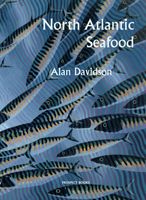Advertisement
Surf Clam, Bar Clam, Hen Clam (and sometimes Sea Clam)
Spisula solida Linnaeus
Appears in
Published 1980
Family Mactridae

Although the species is known as surf clam, or bar clam, because the early settlers found them there, it really belongs to deeper offshore waters, whence it is often washed up on to beaches. A fisherman at Wellfleet on Cape Cod told me that after a recent hurricane large numbers of them had been washed up on the ocean side of the Cape; some as big as 20 cm across. He said that it was pathetic to see them gaping open and trying to manoeuvre themselves back into the sea. Meanwhile, the seagulls were ‘having a ball’. They are accustomed to swooping down, picking a clam off the beach and flying over to the nearest parking-lot, where they drop the creature on to the ‘black-top’. (I thought at first that he meant a motor-car with a black roof, but then realized that black-top means the surface of the parking-lot.) The effect of this is to shatter the shell of the clam, which the seagull proceeds to eat. However, on this occasion the seagulls found that they could just get the clams off the ground but could not then make it over to the parking-lot, since they were so heavy.


